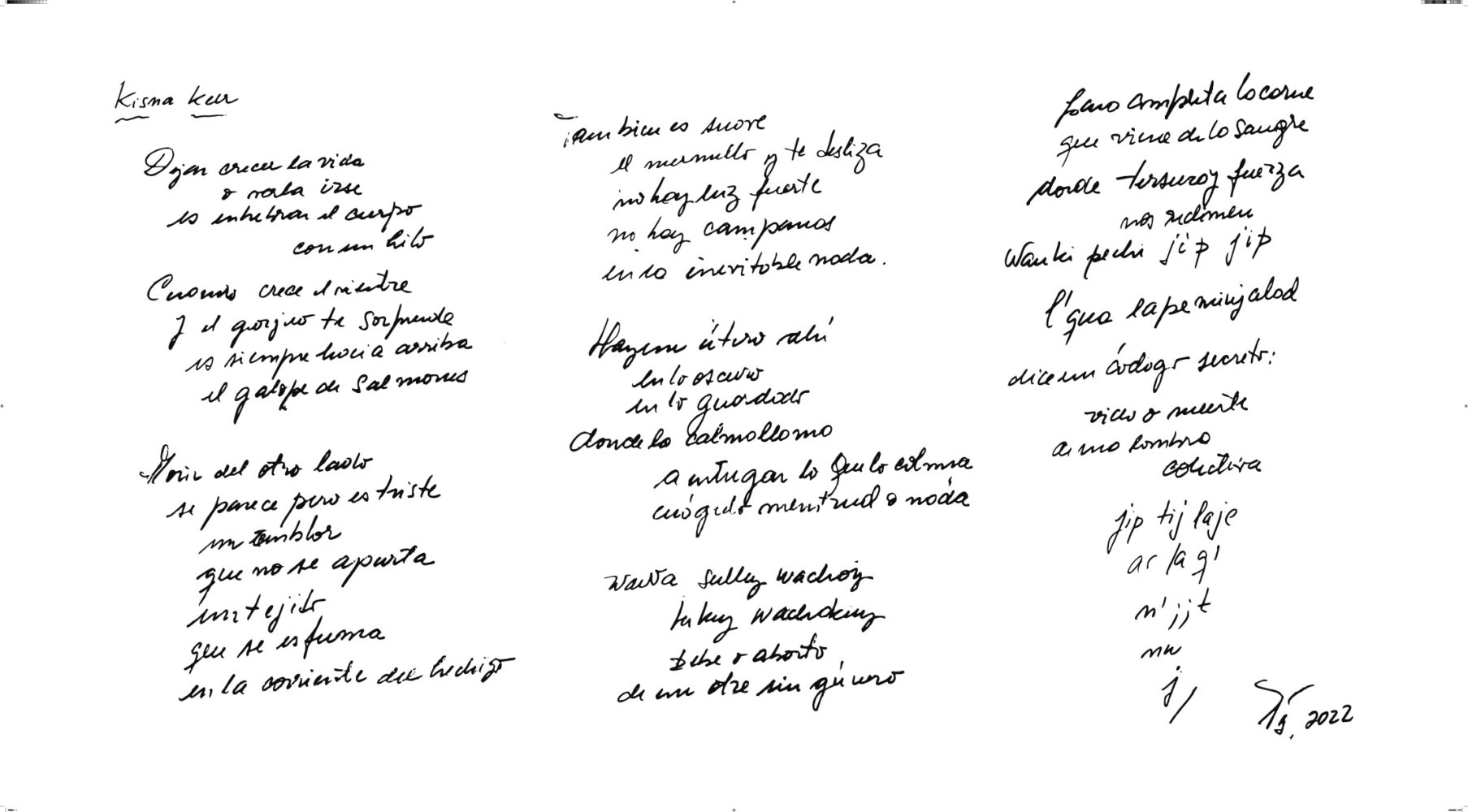Organ of Radical Care: Una Matriz Colaborativa is an ongoing project at the intersection of art and science. It applies the latest scientific knowledge to create a collaborative uterus from cells derived from the menstrual blood of different people (women, trans* and non-binary people) in which a fertilised egg can grow.
In the artistic realisation of the project, a glass chalice hosts a cell colony consisting of endometriosis cells derived from anonymous donors. In a daily ritual of care, the cells in the exhibition are kept alive by cleaning the glass chalice and its surroundings in the evening, supplying them with nutrients and storing them overnight in the sterile environment of an incubator before returning them to the installation the next day.


As the project is an ongoing research project, it consists of several sub-steps that Charlotte Jarvis (artist) and Patricia Saragüeta (scientist and writer) are currently working on: The first was to grow endometrial organoids, so-called mini-uteri, from the cells of anonymous donors in the laboratory. This has meanwhile been successfully achieved.
The next goal of the project is to obtain ethical authorisation to use cells from the menstrual blood of a specific group of 13 Argentinian activists in order to continue the research in Argentina. This act is not only relevant in a scientific sense, but also contains an activist component, as it influences Argentinian guidelines and regulations in the field of research, especially regarding research on the female body.

Once this has been achieved, the final step of the project will be to introduce male cells into the colony, thus detaching the ability to bring life into the world from gender regulations in order to question patriarchal structures and rethink family and social structures.
This theoretical framework of the project is represented in the exhibition by a mind map on a wall positioned in the foreground. In addition, the potential Argentinian activists recite a poem written for the project by Patricia Saragüeta, who is not only a scientist but also a published poetry writer. The video can be seen and heard in the installation and is also available in written form. The additional video documentation shows footage of the cells and the laboratory in Argentina, as well as Charlotte Jarvis and Patricia Saragüeta taking some of the biological samples to Tierra del Fuego in Patagonia – the literal end of the world – which stands here as a symbolic ‘portal’ to the desired future.

Organ of Radical Care is inspired by what Donna Haraway (a feminist scholar and cultural critic known for her contributions to the fields of science and technology studies, feminist theory, and animal studies) describes as ‘split and contradictory’. The project aims to challenge traditional ways of thinking and social structures and to encourage combining ‘rational conversations and fantastic imaginings that change history’.
Documentation of Charlotte Jarvis and Patricia Saragüeta taking some of the biological samples to Tierra Del Fuego in Patagonia – the literal end of the world, conceptualized here as a ‘portal’ to the future we hope to realize.
Filming and editing: Charlotte Jarvis
Collective colonies of stained endometrial (uterus) cells grown in the Saragüeta lab
Images: Saragüeta Lab
Editing: Charlotte Jarvis
Kisma Queer
Allowing life to grow
Or allowing it to leave
Is to pass a thread
through the body
when the belly grows
and the babbling surprises
you
it is always upward
that the salmons gallop
It is like dying on the other
side
But the earthquake
Unfading
Is sad
a tissue that fades
On a spell’s current
The murmur is also soft
and it slides away from you
there are no blinding lights, no
bells
that opens
into the inevitable
nothingness
and there is a uterus
in the darkness
tucked away
where the calm calls
galatonous clot or nothing
wawa sullu wachoy
kikuy wachakuy
beginning or end
of a genderless other
to complete the flesh
that comes from the blood
where it is smooth and strong
we redeem
wanki pechi jip jip
ll’ qua lape miujalal
It says in secret code:
life or death
of a collective
shadow
jip tij laje
ar la q’
ir pi j
n’ ;; t
nu
j
/
Credits
Scientific Consultants: Prof. Susana Chuva de Sousa Lopes, Dr. Anastasia Bragina, Prof. Manuel Selg
Poem: Dr. Patricia Saragueta; Translation: Mariel Chio
Sound Composition: Oliverio Duhalde
Translation: Sarahi Valeria Fuster Cortés, Diego Trujillo Pîsanty, Amber Scott, Fiona Athie
Glass: Atelier NL
Curators: Manuela Hillmann, Daniela Duca
Lab Colleagues Argentina: Luciana Ant and Clara Campos, Saragüeta Lab
Lab Colleague Linz: Anastasia Bragina, Ars Electronica Labs
Lab Assistants: Andrea Oberfichtner, Svetlana Petrovic, Rowan (Petra) Papanekova, Ceyda Temiz, Jingjing Cao, Sandra Kiendler, Sabrine Kaselitz.
Film: Charlotte Jarvis, Wo Portillo del Rayo, James Read
Donors: Uyi Achaerandio, Anna Ferrer, Valeria Mussio, Ania Manjón, Ana Soares, Luciana Ant, Clara Campos, Nisi Fernandez, Paye Nally, Sofía del Valle, Tam Echandi, Analía Ricci
The work is being realized within the framework of the European Media Art Platforms residency program at
Ars Electronica with support of the Creative Europe Culture Programme of the European Union. Additional support from
MU Hybrid Arthouse, the Royal College of Art, CONICET and FCEN-UBA.
This project is funded and presented in the context of the EMAP project co-funded by the Creative Europe Programme of the European Union.
